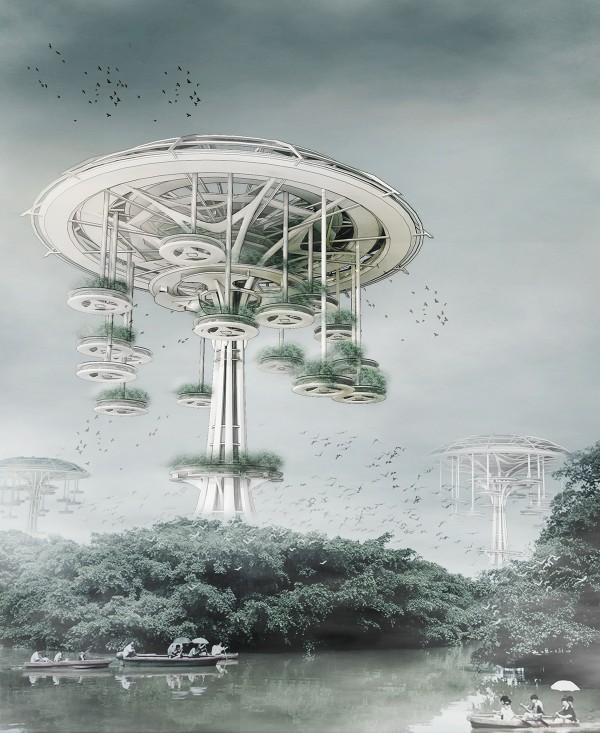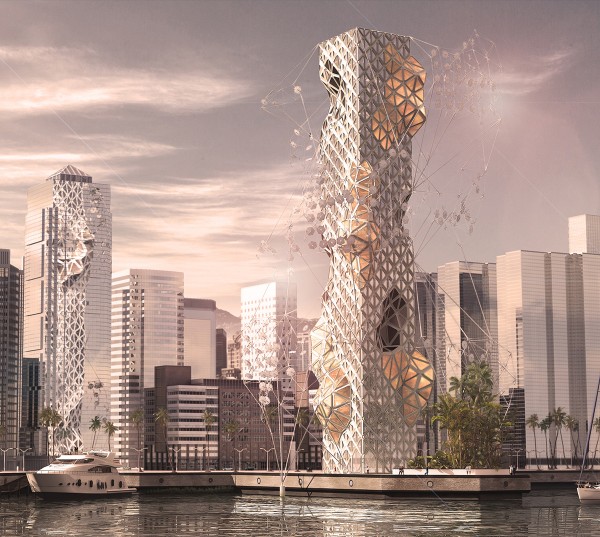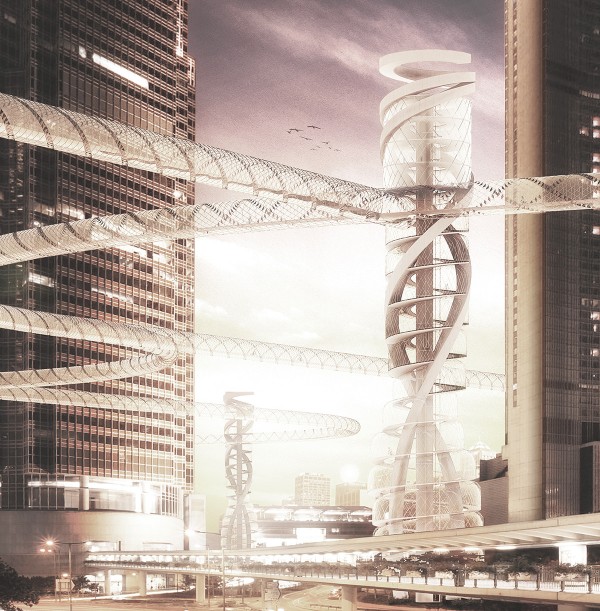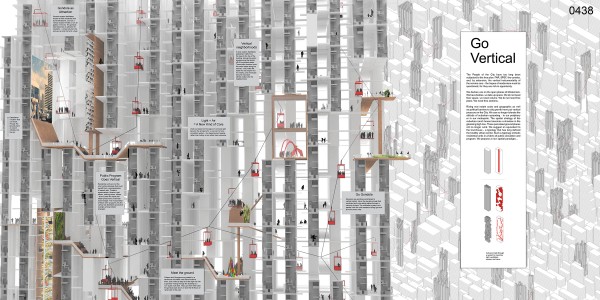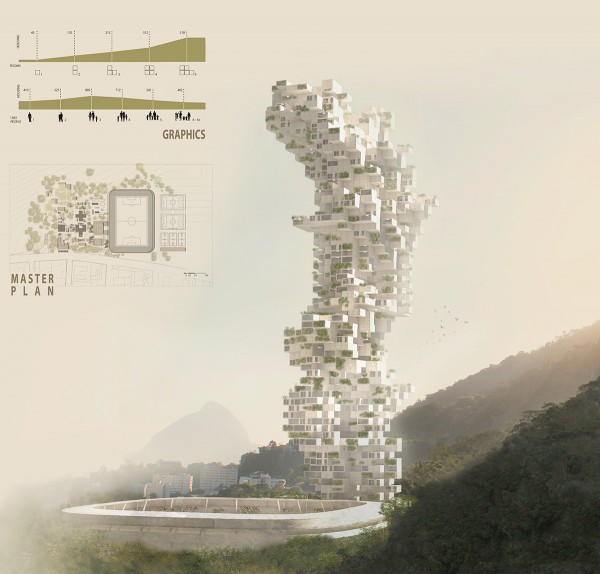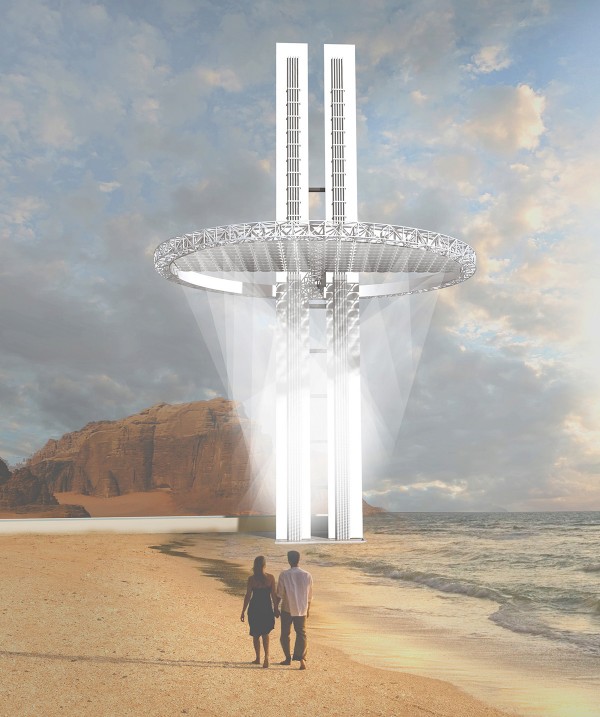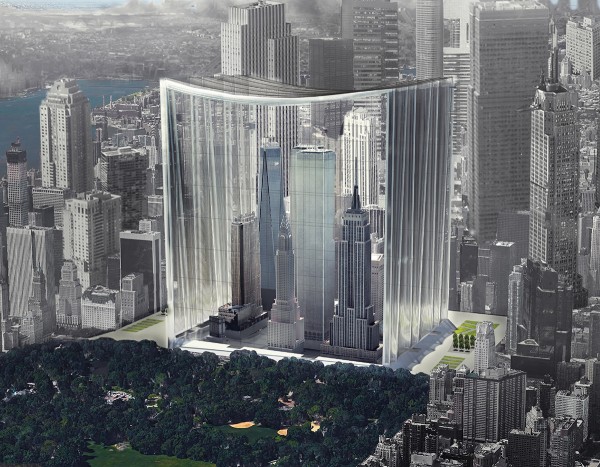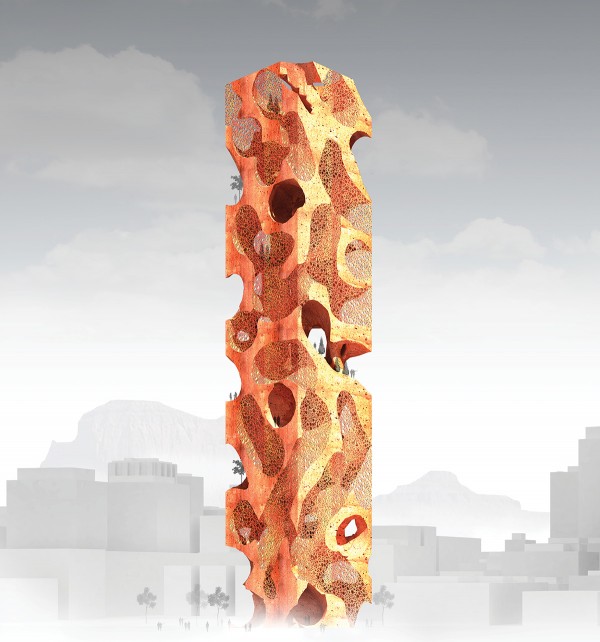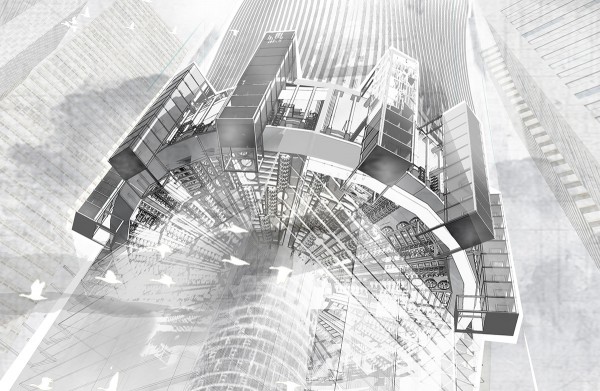Editor’s Choice
2015 Skyscraper Competition
Yi Wang, Jin Wei
China
Design Background
Gulao waterfront village as the last ecological area which has traditional characteristics in Pearl River Delta of China has another reputation named “Southern Venice”. With the development of population of the local villagers, Gulao waterfront village is facing a severe challenge between its expansion and the scarcity of land resource. It has abundant water resources in Southern China, and most of the villages are built near water. The settlement architecture in Gulao waterfront village are one unique as dots that are scattered across the whole village, which accounted for expansion limited. It is essential for us to help the last traditional waterfront village in Southern China in the role of designers as an attempt to solve the problem. Therefore, a skyscraper is designed as “Floating Waterfront Village”, capable of sustainable development.
In ancient times, waterfront villages in Southern China are located in low-lying areas, which is accounting for flood disasters, a serious threat to villagers’ life and productive activities. The local people dug deep ponds for breeding fish in some low-lying areas, according to local condition. The whole village was constructed of mulberry-dike-fishponds avoiding the depression of flood and creating ecological environment. Some villages were constructed on the piers, spreading across the waterfront area. Pier as land is linked to pond-protecting wall. Buildings are constructed on the piers as little as one household to as much as twenty households and also ancestral halls are constructed on them. Ponds separate different piers, thereby forming punctuate villages.
Design Conception
“Floating Waterfront Village” as a new kind of skyscrapers will be introduced to Gulao waterfront village, making the best use of original land of the village, by not destroying its skin texture. The height of skyscraper is more than 300 meters; it looks like a floating waterfront village or a bird paradise in the air from the ground. From the morphological point of view, the design inspiration is from the traditional big Banyan in Southern China, and mainly living and activity function are put on the small and large platforms. There are some small living platforms hung down around the top roof as “aerial roots”, which makes the skyscraper integrated into the whole environment. “Floating Waterfront Village” not only has practical function, but also set complex ecological energy saving, scenery viewing, science educating and art in one of the multiple experience. By the way, it establishes a showcase of waterfront village of green ecological and low carbon energy saving technology in the future.
The function of the skyscraper
“Floating Waterfront Village” has multiple identities. It is a village with living function in the air, also a climate observation station, or an agricultural research station, or a sightseeing platform. First of all, this skyscraper is a village for people’s living activities. Forming a waterfront village in Southern China is including lakes, ponds, wells, squares and the Banyan trees. Therefore, a huge platform is on the top of this skyscraper as the functions of activity and communication. Vertical supporting-skeleton is the water delivery system like a huge well; the water is taken out from the ponds to living areas. At the same time, different kinds of roofs have rainwater collection systems, replenishing water into ponds during the drought seasons. There are many Banyan trees planted on the platforms of the building, and the trees will be a certain scale after 3-5 years in Southern China, looking like a bird paradise. Secondly, the waterfront village belongs to the natural ecological zones, and a Banyan tree will be with luxuriant foliage covering 1 square meters, thousands of birds will be here. The climate observation station will be set in the skyscraper, also for the protection of the natural environment and rare species. Thirdly, there is an agricultural research station here to provide research and guidance the sustainable development of the waterfront village. Finally, the traditional village as an ecological area attracts thousands of visitors. The skyscraper not only releases such pressure, but also brings some economic income.
Even under the worst situation, even if it is supposed that Gulao waterfront village disappeared, the skyscraper was still meaningful. It will stand there not only as a “Floating Waterfront Village” but also an ironical monument, a piece of evidence witnessing the crime of the selfish human beings. Read the rest of this entry »

